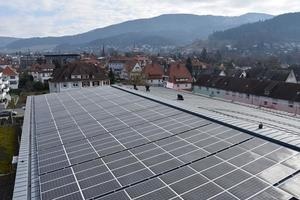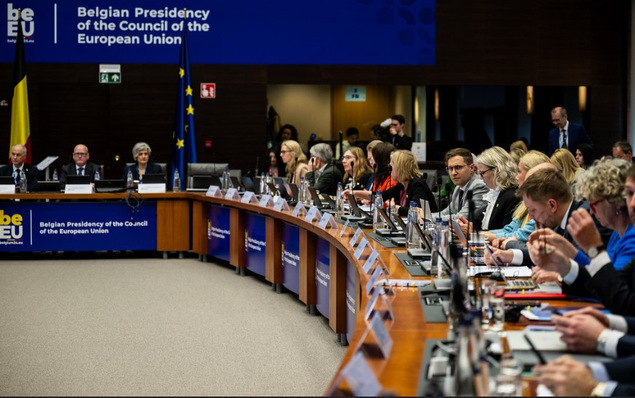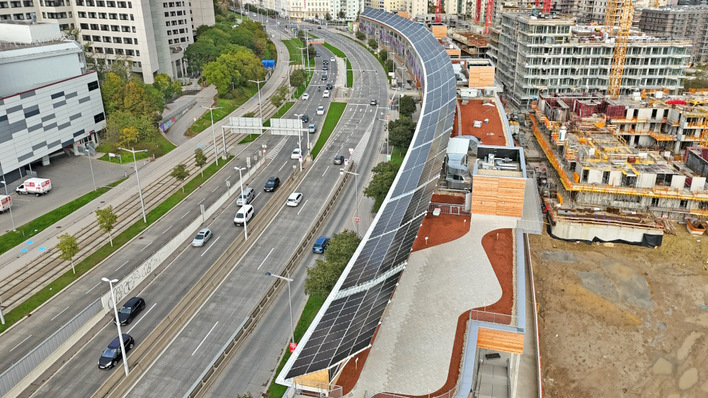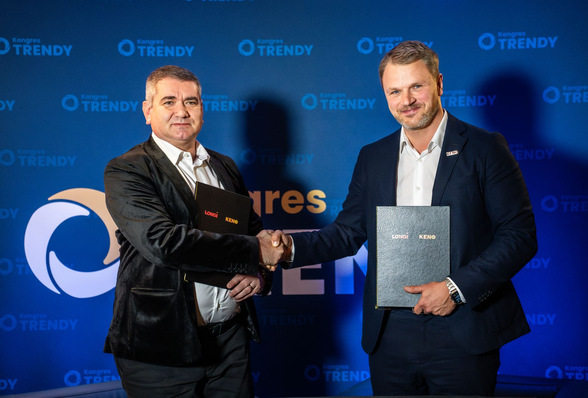Industrial buildings have plenty of roof space for photovoltaic systems but are frequently not structurally designed to bear the heavy weight of conventional glass solar modules. With this in mind, SunMan from China has developed an innovative photovoltaic module without glass branded as “eArche”. eArche modules are much thinner and lighter than conventional glass solar modules, while at the same time offer the same weather resistance and performance as conventional modules with crystalline silicone cells. The initial projects in Waldkirch in south Baden, Switzerland and Spain have delivered good results. “Thanks to a patented combination of materials, our new style glass free solar modules function well and are easy to bond to the roof,” explains Zhengrong Shi, a solar pioneer and founder of SunMan. “In this way, all industry and commercial rooftops can be covered with solar modules and supply a large part of the electricity consumption through solar energy.” The company will be showcasing this new technology at the Intersolar in Munich from 15 to 17 May 2019. Visitors will find the stand in Hall A1 (booth 612).
Huge market potential for commercial and industrial rooftops
Industrial companies usually have high energy requirements and correspondingly high electricity costs. In theory, they could cover a large proportion of these needs themselves through photovoltaics (PV) on the roofs of their factory halls and other buildings. According to a study by the Fraunhofer Institute for Wind Energy and Energy System Technology, the overall flat roof surface area for non-residential buildings in the European Union totals 360 million square metres (2012). “However, we assume that around 60 per cent of these industrial roofs cannot permanently support conventional solar modules weighing between 15 and 20 kilograms per square metre. If the roof structure only permits minor additional loads, there have hardly been any opportunities until now for exploiting the PV potential,” says Dr Zhengrong Shi. How much weight can be loaded on roofs also depends on the local wind and snow conditions. “The lighter the solar modules, the greater the chance of installing PV modules over the entire roof area,” Shi continues.

3.5 to 5 kilograms per square meter
SunMan has developed an innovative technology to make ultra-light PV modules that, with a total weight of 3.5 to 5 kilograms per square meter (kg/m²), can be easily attached to rooftops. This makes the PV modules 10 to 15 kg/m² lighter than conventional solar modules, including their mounting structure. The light eArche modules offer numerous benefits to installers. The low weight and thin structure make it easy and inexpensive to transport and store large quantities of the modules. These features also ensure fast installation and in most cases enable the modules to be attached to the roof using simple bonding technology. It is not necessary to install a heavy mounting system and no penetration is required. This protects the roof from being damaged and ensures that the roof remains waterproof once the solar power system has been installed.
The low weight of the PV modules is due to patented composite materials that replace the glass pane on the front side of conventional solar modules. As a result, the entire panel is less than 2mm thick. “With the light PV modules, we can now also produce green power on the roof of the town hall in Waldkirch and further expand our renewable generation portfolio,” says Thorsten Ruprecht, CEO of Stadtwerke Waldkirch. “It wasn’t possible to install heavier solar modules with glass panels on the titanium zinc roof. We’re now in a position to implement our planned projects that were previously thwarted by the structural loading problems.” The ultra-light PV modules, with an installed capacity of 190 kilowatts, commenced operation in February 2019. A further 55 kilowatts will soon be added on the foyer roof. “We’re now able to provide between 80 and 100 households with solar power,” Ruprecht continues. In early 2018, 34 kilowatt eArche modules were installed on the trapezoidal sheet roof of the water treatment plant in Küsnacht, Switzerland. So far a yield of 1,065 kilowatt hours per installed kilowatt peak has been achieved.
High yield and robust structure
Despite the absence of a glass pane, the eArche panels are just as robust and durable as conventional solar modules. This is due to the weatherproof properties of the composite materials being used in both cases. In a conventional glass based module, the durability of the module is not determined by glass but rather by the polymer materials (EVA and fluorine layers coated PET) laminated on the backside of the module. In the case of eArche module, there are multiple layers of waterproof polymer composite materials being laminated on both sides of crystalline silicon solar cells apart from the protection layers on the front and back surfaces of the solar module. This structure further enhances the protection of the solar cells from the hazardous environment comparing to the conventional modules. As crystalline silicon solar cells are used in the module, eArche modules have similar electrical performance to that of conventional modules around 18%, much higher than the efficiency of thin-film solar modules.

Own consumption is worth the investment
Following the successful market entry in Asia, Australia and the US, SunMan is now introducing the modules throughout Europe. “The power generated is intended mainly for self-consumption,” Shi says. After all, industrial and commercial companies have a decisive advantage: their energy requirements are highest during the sunny hours of the day when the solar power system generates the most electricity. By consuming the solar power generated themselves, industrial companies therefore save on a large proportion of the more expensive industrial and commercial power, which cost many cents more. As a result, PV systems not only protect the climate, but are also an economically astute investment. The more solar power is used by the companies themselves, the higher the return on investment. “In future it will also be possible to put these advantages to practical use for companies with lightweight roofs,” Shi explains. (HCN)
Stay informed, get our free newsletter twice a week. Register here
Join our pv Guided Tours at The smarter E Europe 2019 (Intersolar Europe, ees Europe, Power2Drive, EM-Power), register here







